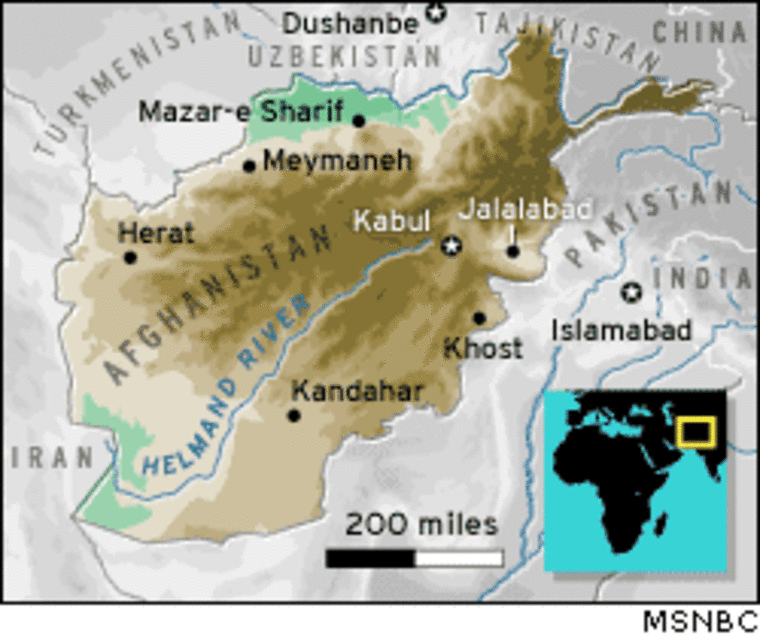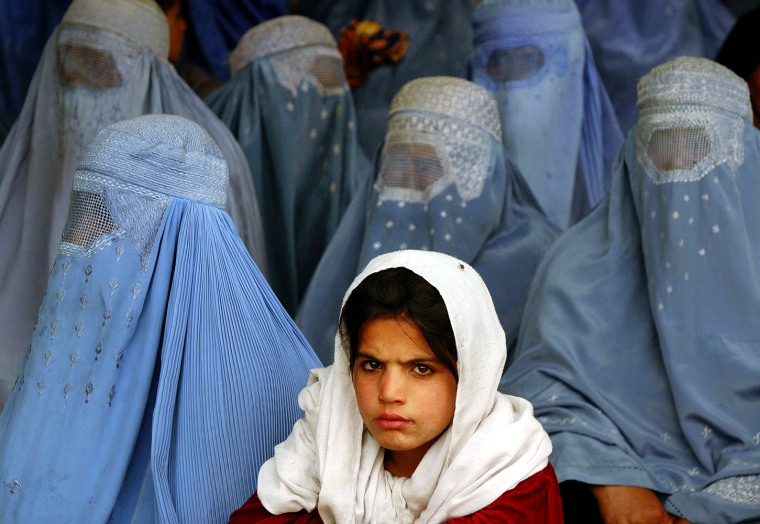The burqa, a symbol of Taliban repression of women, remains a common sight in Afghanistan, nearly three years after the hard-line government was ousted by U.S. forces.
In Kabul, more than half of the women wear burqas, while outside the capital virtually all women are clad in head-to-toe covering.
For Westerners, it is an astonishing sight. As American health worker Raquel Reyes noted, “It was the first thing I noticed when I arrived.”
“All these women in burqas. I thought things had changed and that there wouldn’t be so many any more," said Reyes. “I was so pleased to see girls, little girls, going to school.”
When the Taliban took over the country in 1996, girls were forbidden from attending school. Now they are receiving education along with the boys, though they remain covered up in long black shrouds, with white headscarves.
Women’s role has changed, but burqas still prevail
Yet the status of women has improved since Taliban times. Women can walk around, unaccompanied by males, and they are allowed to work. They are free to roam in public without fear of being arrested or beaten for wearing high heels or seeming to walk in a provocative manner.
Yet the burqa still prevails and for some women, it is a form of protection.
They recall the time before the Taliban when the Northern Alliance took control of Kabul in 1992. It was a time of violent crimes, many of them committed against women. The burqa, they believed, protected them from unwanted male attention. Now with the backing of the United States and international forces, many members of the Northern Alliance are once again in positions of power.

Their transgressions are in the past, but not entirely forgotten. Change comes slowly in a country ravaged by a series of wars, and a culture deeply rooted in tradition.
Subtle changes
The female dress code has changed in ways subtle to foreigners, but revolutionary to many Afghans.
Underneath their burqas, many women wear high heels, and they daringly put on brightly colored nail polish, details that may not please the conservative religious leaders who remain influential.
Another breakthrough will occur in Athens this summer when Robina Muqimyar represents her country in the 100 meters race at the Olympics. She and one other judo wrestler will be the first women to represent their nation at the Olympics.
Not all their compatriots will be cheering on their behalf. Islamic mullahs have criticized Muqimyar, saying it is wrong for her to display her face or body to non-Muslims in a public setting.
In a compromise, Muqimyar will compete in a tracksuit, a decision made by the Afghan Olympic Committee, and will not be showing her legs.
She and her fellow female competitor are part of a new generation of young women who are lifting the veil for their nation.
Mohamed Haroon, owner of a burqa stall in the bustling central Kabul Mundawi market said he’s not worried or offended by these modern women.
Sales are thriving he said, and even if more women are shedding their blue robes, they are still in the minority.
“They still come here to buy. Maybe not always from Kabul, but from the countryside,” said Haroon.
Prices are still high by Afghan standards. A good burqa costs anywhere from $8 to $12. With the average salary at $40 a month, it is a major expenditure for Afghans.
Haroon said he’s convinced there is a good future in burqa sales, but with true entrepreneurial spirit, he’s exploring other options. He’s branched out and in addition to burqas, he now sells bras.
